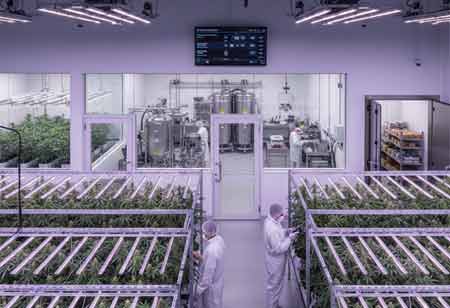Thank you for Subscribing to Cannabis Business Insights Weekly Brief
Enhancing Efficiency and Compliance: Streamlining the Cannabis Supply Chain
The cannabis industry has witnessed remarkable growth in recent years, and with this expansion comes the need for a well-structured and efficient supply chain.

By
Cannabis Business Insights | Thursday, September 07, 2023
Stay ahead of the industry with exclusive feature stories on the top companies, expert insights and the latest news delivered straight to your inbox. Subscribe today.
In the ever-evolving landscape of the cannabis industry, a well-optimized supply chain is paramount.
FREMONT, CA: The cannabis industry has witnessed remarkable growth in recent years, and with this expansion comes the need for a well-structured and efficient supply chain. Each stage plays a crucial role in delivering high-quality products to consumers while adhering to stringent regulatory standards, from cultivation and processing to distribution. This article delves into strategies for optimizing the cannabis supply chain, ensuring product excellence and industry regulations compliance.
1. Cultivation Innovations
Efficiency begins at the very start of the supply chain - cultivation. Implementing innovative techniques, such as vertical farming and hydroponics, can maximize space utilization and yield while minimizing resource consumption. Additionally, leveraging IoT sensors and AI-driven analytics can provide real-time insights into plant health, helping growers make informed decisions and prevent potential issues.
2. Quality Control in Processing
Effective processing is essential for maintaining consistent product quality. Implementing Good Manufacturing Practices (GMP) ensures that products are produced consistently and meet quality standards. Automating processes like trimming, drying, and extraction not only reduces human error but also increases the speed of production. Stringent testing at this stage guarantees that the final product is safe, potent, and free from contaminants.
3. Distribution and Logistics
Distribution involves intricate planning to ensure timely and accurate deliveries while adhering to strict regulatory requirements. Implementing a robust inventory management system prevents overstocking or shortages and reduces waste. Collaborating with experienced logistics partners well-versed in cannabis transportation regulations ensures compliance with complex laws governing the movement of cannabis products.
4. Technology Integration
The integration of technology is pivotal in optimizing the supply chain. Blockchain, for instance, can enhance transparency by creating an immutable record of every transaction and movement within the supply chain. This not only ensures product authenticity but also aids in tracking and tracing products in the event of recalls or audits.
5. Regulatory Compliance as a Cornerstone
Compliance with regulations is non-negotiable in the cannabis industry. Each supply chain step must adhere to a myriad of laws to ensure product safety and legality. Collaborating closely with legal experts and staying updated on shifting regulations is crucial to avoid costly penalties and reputational damage.
6. Sustainability Initiatives
Integrating sustainable practices into the supply chain is ethical and economically beneficial in an era of increasing environmental consciousness. From energy-efficient cultivation methods to recyclable packaging, these initiatives reduce the industry's carbon footprint and resonate positively with environmentally-conscious consumers.
7. Collaboration and Partnerships
A cohesive supply chain relies on collaboration between stakeholders. Building solid relationships with suppliers, manufacturers, and distributors fosters smoother operations and quicker response times. Partnerships can also provide access to specialized expertise, enabling businesses to navigate challenges effectively.
Conclusion
In the ever-evolving landscape of the cannabis industry, a well-optimized supply chain is paramount. From planting the first seed to delivering the final product, each stage presents opportunities for efficiency gains and compliance adherence. By embracing innovative technologies, maintaining a focus on regulatory requirements, and fostering collaborations, businesses can create a supply chain that meets consumer demands and positions them as responsible leaders in the cannabis sector. Through these efforts, the industry can continue flourishing while delivering safe, high-quality products to an eager market.






